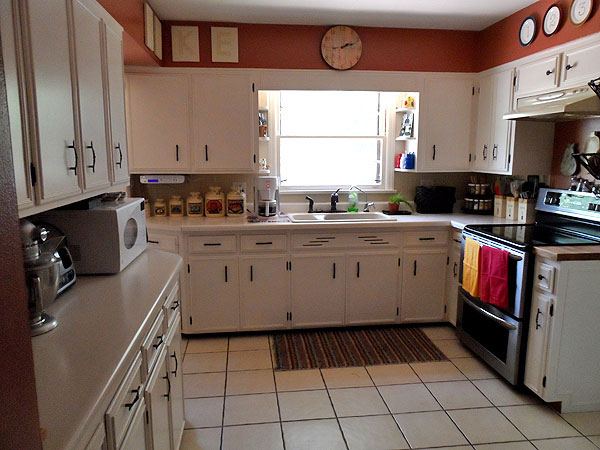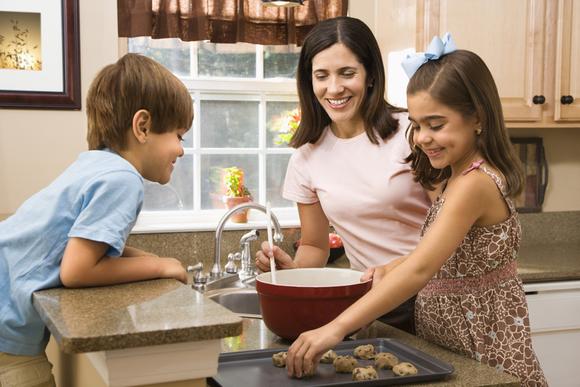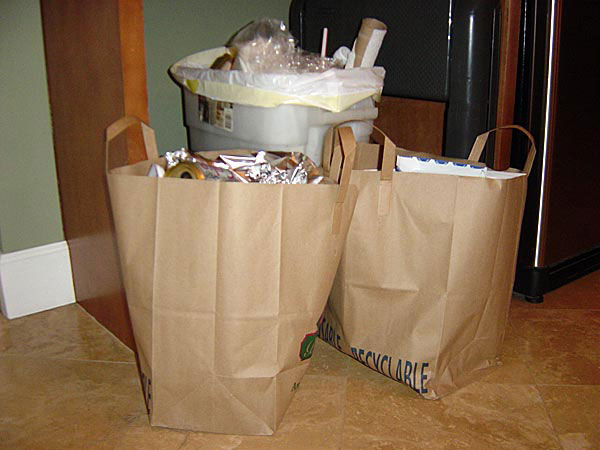If you have a garden at home, make the most of it by growing your own vegetables. Eat fresh! Are those brinjals really good or are they shining because they have been smeared with oil? Is that bundle of spinach actually green or loaded with artificial color? In this age of aggressive farming, we always wonder whether there are more chemicals than nutrition in vegetables we buy. One way to cut down your risk of chemicals from food can be growing your own vegetables. With a little bit of effort you can get fresh organic food straight from your very own kitchen garden. If you have adequate space, you can have a lavish kitchen garden. However, space is not a constraint if you want to grow your own greens. Many herbs and vegetables can even flourish in pots, growing bags and window baskets. In this articleA Kitchen garden from the scratchSoil PreparationYou reap what you sowManuring and wateringPests, weeds and diseasesHarvesting A Kitchen garden from the scratch The first step is finding a place for your veggies. A 200 square meter plot can take care of the food stock for a family of 6. This plot should get very good sunlight for at least 4 hours every day. Tomatoes, cucumbers and other fruiting vegetables cannot grow without substantial sunlight. While sunlight is good for root vegetables like beets and carrots, leafy vegetables need more shade. Soil Preparation A good land preparation at the right time (like spring) maximizes the growth factors. You can have a raised bed near your house that will get its required dose of shade from the roof. Soil can be improved by adding some red earth. You can ask more about soil requirements from your neighborhood nursery. Your plot will be ready for sowing after it has been tilled. You reap what you sow Buy seeds according to seasons, your requirement and the amount of vegetables you would need for your family. While buying them enquire about the sowing and spacing technique of the seeds. For leafy vegetables you can sprinkle the seeds and cover them with more soil. For others you might need furrow planting while some can be transplanted. Manuring and watering By adding organic fertilizers or manures you improve absorption, biochemical stimulation and growth in plants. Manures also add nutrients to the soil. Another crucial factor for plant growth is water. However, you cannot water the kitchen garden the way you water your flower pots. These plots need abundant supply of water. Your vegetable garden needs regular irrigation for 10 days after sowing. You can then bring it down to twice or thrice every week. The soil should never be totally dry, it needs constant moisture. Pests, weeds and diseases Your lovely little kitchen gardening would need vigilant weeding. Pests and insects can be kept away by natural methods like companion gardening. For example, grow basil and tomatoes close by. Basil attracts bugs that eat the pests which bother tomatoes. Sadly, in some urgent cases a pesticide can be the only way to save your plants. In such cases go for microbial pesticides, botanical pesticides and pesticides manufactured from petrochemicals. Botanical pesticides, for example, quickly break down after exposure to heat or water causing far less damage than synthetic pesticides. Harvesting This is the moment every kitchen gardener waits for. Harvesting is your time to pluck the fruits of your labor. Remove the ripe vegetables as soon as they mature to avoid rotting. Your kitchen garden will thrive with your seeds of effort and patience. After a couple of months, all you need to do is walk down to your own sabzi market to get a bag full of healthy foods.
If you have a garden at home, make the most of it by growing your own vegetables. Eat fresh! Are those brinjals really good or are they shining because they have been smeared with oil? Is that bundle of spinach actually green or loaded with artificial color? In this age of aggressive farming, we always wonder whether there are more chemicals than nutrition in vegetables we buy. One way to cut down your risk of chemicals from food can be growing your own vegetables. With a little bit of effort you can get fresh organic food straight from your very own kitchen garden.
If you have adequate space, you can have a lavish kitchen garden. However, space is not a constraint if you want to grow your own greens. Many herbs and vegetables can even flourish in pots, growing bags and window baskets.
A Kitchen garden from the scratch
The first step is finding a place for your veggies. A 200 square meter plot can take care of the food stock for a family of 6. This plot should get very good sunlight for at least 4 hours every day. Tomatoes, cucumbers and other fruiting vegetables cannot grow without substantial sunlight. While sunlight is good for root vegetables like beets and carrots, leafy vegetables need more shade.
Soil Preparation
A good land preparation at the right time (like spring) maximizes the growth factors. You can have a raised bed near your house that will get its required dose of shade from the roof. Soil can be improved by adding some red earth. You can ask more about soil requirements from your neighborhood nursery. Your plot will be ready for sowing after it has been tilled.
You reap what you sow
Buy seeds according to seasons, your requirement and the amount of vegetables you would need for your family. While buying them enquire about the sowing and spacing technique of the seeds. For leafy vegetables you can sprinkle the seeds and cover them with more soil. For others you might need furrow planting while some can be transplanted.
Manuring and watering
By adding organic fertilizers or manures you improve absorption, biochemical stimulation and growth in plants. Manures also add nutrients to the soil.
Another crucial factor for plant growth is water. However, you cannot water the kitchen garden the way you water your flower pots. These plots need abundant supply of water. Your vegetable garden needs regular irrigation for 10 days after sowing. You can then bring it down to twice or thrice every week. The soil should never be totally dry, it needs constant moisture.
Pests, weeds and diseases
Your lovely little kitchen gardening would need vigilant weeding. Pests and insects can be kept away by natural methods like companion gardening. For example, grow basil and tomatoes close by. Basil attracts bugs that eat the pests which bother tomatoes.
Sadly, in some urgent cases a pesticide can be the only way to save your plants. In such cases go for microbial pesticides, botanical pesticides and pesticides manufactured from petrochemicals. Botanical pesticides, for example, quickly break down after exposure to heat or water causing far less damage than synthetic pesticides.
Harvesting
This is the moment every kitchen gardener waits for. Harvesting is your time to pluck the fruits of your labor. Remove the ripe vegetables as soon as they mature to avoid rotting.
Your kitchen garden will thrive with your seeds of effort and patience. After a couple of months, all you need to do is walk down to your own sabzi market to get a bag full of healthy foods.































